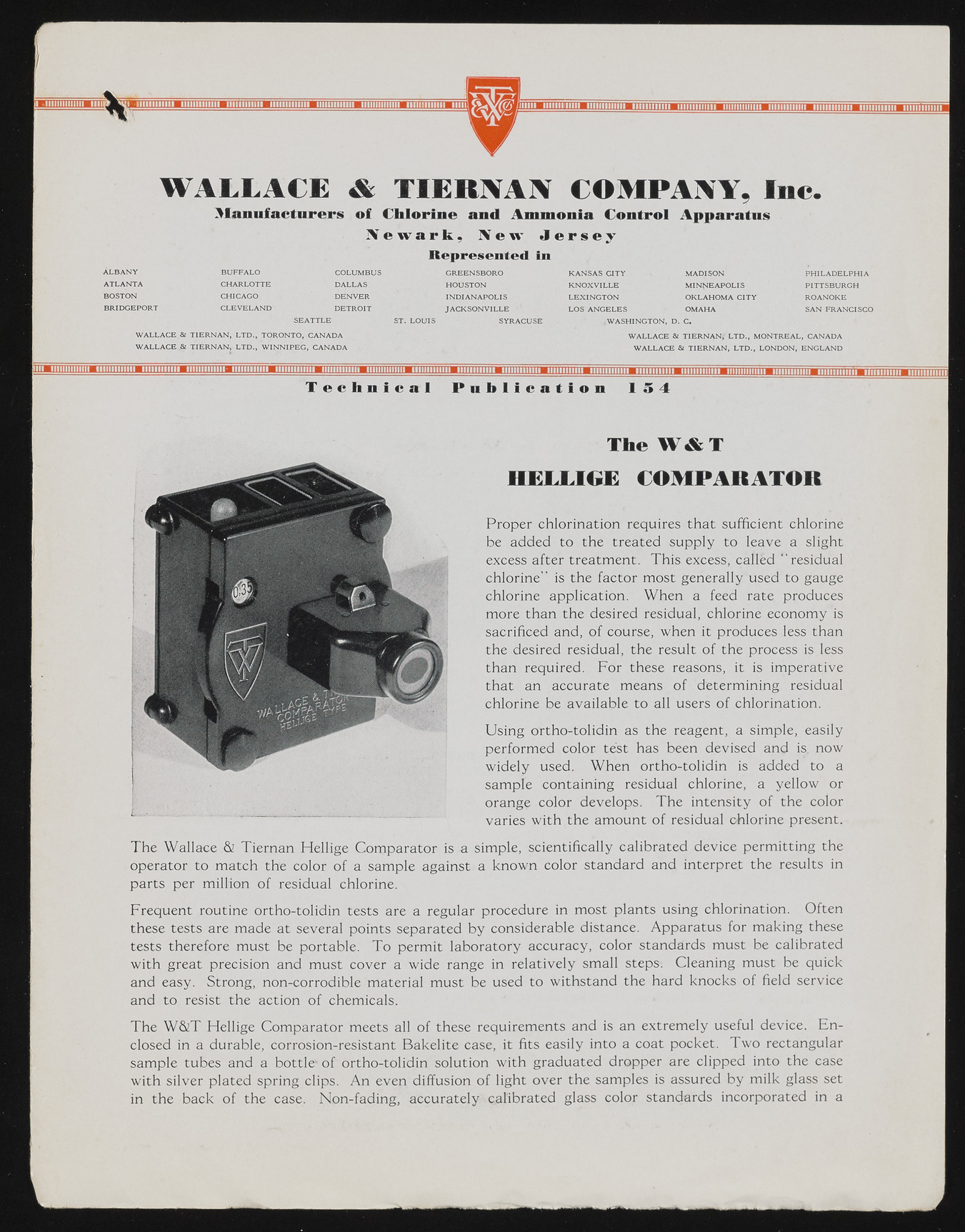Copyright & Fair-use Agreement
UNLV Special Collections provides copies of materials to facilitate private study, scholarship, or research. Material not in the public domain may be used according to fair use of copyrighted materials as defined by copyright law. Please cite us.
Please note that UNLV may not own the copyright to these materials and cannot provide permission to publish or distribute materials when UNLV is not the copyright holder. The user is solely responsible for determining the copyright status of materials and obtaining permission to use material from the copyright holder and for determining whether any permissions relating to any other rights are necessary for the intended use, and for obtaining all required permissions beyond that allowed by fair use.
Read more about our reproduction and use policy.
I agree.Information
Digital ID
Permalink
Details
More Info
Rights
Digital Provenance
Publisher
Transcription
W ALLACE & T IE R M N COM PANY, Inc. M an u factu rers of C hlorine and A m m on ia Control A pparatus N e w a r k , N e w J e r s e y R e p r e s e n te d in ALBANY BUFFALO COLUMBUS GREENSBORO KANSAS CITY MADISON PHILADELPHIA ATLANTA CHARLOTTE DALLAS HOUSTON KNOXVILLE MINNEAPOLIS PITTSBURGH BOSTON CHICAGO DENVER INDIANAPOLIS LEXINGTON OKLAHOMA CITY ROANOKE BRIDGEPORT CLEVELAND DETROIT JACKSONVILLE LpS ANGELES OMAHA SAN FRANCISCO SEATTLE ST. LOUIS SYRACUSE { WASHINGTON, D. C. WALLACE. &i TIERNAN, LTD,, TORONTO, CANADA WALLACE & TIERNAN*' LTD., MONTREAL, CANADA WALLACE TIERNAN* LTD., WINNIPEG, CANADA WALLACE & TIERNAN, LTD., LONDON, ENGLAND T e c h n i c a l P u b l i c a t i o n 1 5 4 The W & T HELLIGE COMPARATOR Proper chlorination requires that sufficient chlorine be added to the treated supply to leave a slight excess after treatment. This excess, calldd “ residual chlorine" is the factor most generally used to gauge chlorine application. When a feed rate produces more than the desired residual, chlorine economy is sacrificed and, of course, when it produces less than the desired residual, the result of the process is less than required. For these reasons, it is imperative that an accurate means of determining residual chlorine be available to all users of chlorination. Using ortho-tolidin as the reagent, a simple, easily performed color test has been devised and is, now widely used. When ortho-tolidin is added to a sample containing residual chlorine, a yellow or orange color develops. The intensity of the color varies with the amount of residual c-hlorine present. The Wallace & Tiernan Hellige Comparator is a simple, scientifically calibrated device permitting the operator to match the color of a sample against a known color standard and interpret the results in parts per million of residual chlorine. Frequent routine ortho-tolidin tests are a regular procedure in most plants using chlorination. Often these tests are made at several points separated by considerable distance. Apparatus for making these tests therefore must be portable. To permit laboratory accuracy, color standards must be calibrated with great precision and must cover a wide range in relatively small steps. Cleaning must be quick and easy. Strong, non-corrodible material must be used to withstand the hard knocks of field service and to resist the action of chemicals. The W &T Hellige Comparator meets all of these requirements and is an extremely useful device. Enclosed in a durable, corrosion-resistant Bakelite case, it fits easily into a coat pocket. Two rectangular sample tubes and a bottle* of ortho-tolidin solution with graduated dropper are clipped into the case with silver plated spring clips. An even diffusion of light over the samples is assured by milk glass set in the back of the case. Non-fading, accurately calibrated glass color standards incorporated in a

